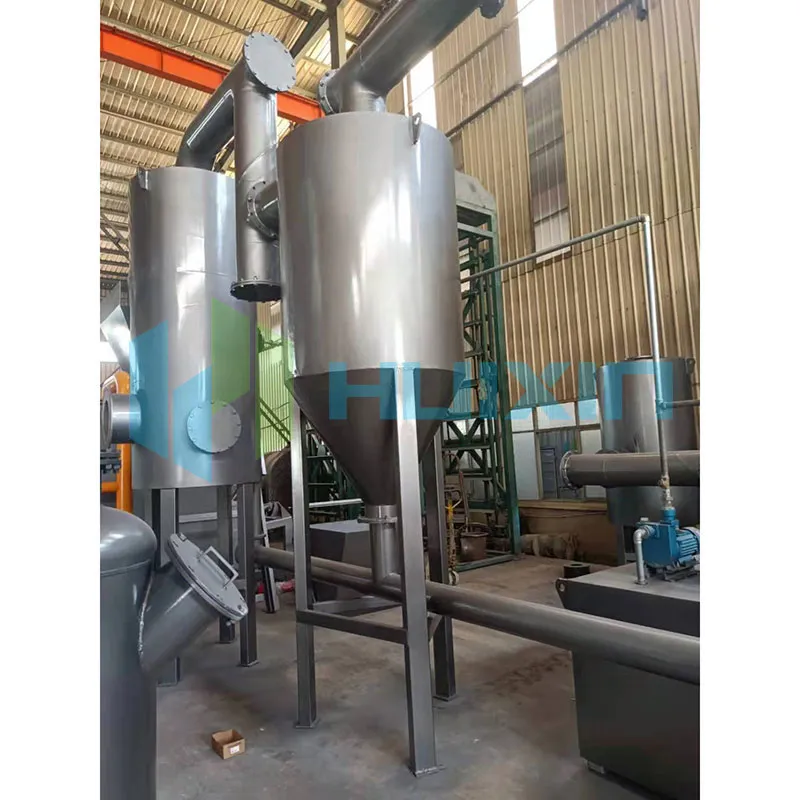The Benefits and Best Practices for Using Cyclone Dust Collectors
2024-11-05
When it comes to dust collection in industrial applications, efficiency and cost-effectiveness are key factors to consider. A Cyclone Dust Collector is one of the most common and effective systems designed to remove dust and particulate matter from the air. These units utilize centrifugal force to separate dust from air, offering many advantages over traditional bag filters or cartridge systems. In this blog, we will dive deeper into the benefits of cyclone dust collectors and explore best practices for their installation and maintenance.
The Benefits of Cyclone Dust Collectors
1. Efficient Dust Separation:
Cyclone dust collectors are designed to remove larger dust particles (usually greater than 10 microns) with high efficiency. The centrifugal force generated inside the cyclone chamber forces dust to the outer edges, where it is then collected. This process ensures that the heavier particles are separated out before they can clog up finer filters or affect air quality.
2. Low Maintenance and Longevity:
Since cyclone dust collectors don’t rely on filters to trap dust, they require significantly less maintenance compared to baghouses or cartridge filters. The dust is collected in a hopper or bin at the bottom of the cyclone, and the unit can run for long periods before requiring emptying. This makes it a cost-effective option for industrial environments where minimizing downtime is crucial.
3. Pre-Filtering Capabilities:
Cyclones are often used as the first stage in a multi-stage filtration system. In this case, they act as a pre-filter, capturing larger dust particles before the air is sent to finer filtration systems (like fabric filters or cartridge filters). This reduces the load on subsequent filters and extends their lifespan, reducing maintenance costs.
4. Minimal Power Consumption:
Cyclone dust collectors are typically low in energy consumption, especially when compared to more complex dust collection systems. Their simple design, which relies on the centrifugal force of spinning air rather than an elaborate filtration mechanism, helps to reduce operational costs.
5. Durability and Reliability:
Cyclone dust collectors are known for their robust construction. Made from materials like steel or heavy-duty plastic, they are designed to withstand harsh industrial conditions, including high temperatures, abrasive dust, and large volumes of particulate matter.
Best Practices for Using Cyclone Dust Collectors
1. Proper Sizing for the Application:
One of the most important factors in ensuring the effectiveness of a cyclone dust collector is proper sizing. If the cyclone is too small for the amount of dust being generated, it won’t be able to efficiently separate dust from the air. On the other hand, an oversized cyclone may waste energy and space. Consider factors like air flow (measured in CFM—cubic feet per minute) and the types of dust being generated when selecting the right cyclone.
2. Use a Pre-Separator or Shaker:
To extend the lifespan of your cyclone dust collector, consider adding a pre-separator or shaker to the system. A pre-separator is designed to catch the largest dust particles before they reach the cyclone, while a shaker helps remove sticky or heavy dust that might cling to the cyclone’s walls. These additions can improve the overall performance of the system.
3. Optimize the Inlet Design:
The shape and placement of the cyclone’s inlet are crucial for effective dust separation. A tangential inlet is typically used to induce the necessary swirling motion inside the cyclone. Ensuring that the inlet is positioned correctly and is of adequate size can help maintain the efficiency of the collector.
4. Maintain Proper Airflow:
Consistent airflow is key to maintaining the performance of a cyclone dust collector. Ensure that ducts and pipes leading to and from the cyclone are clear of obstructions. Regularly check that the fan or blower is functioning properly and that the system is moving the correct volume of air.
5. Regular Cleaning and Maintenance:
While cyclone dust collectors require less frequent maintenance than baghouses, it’s still essential to regularly inspect the unit. Check the hopper for blockages, ensure that the air outlets are clear, and monitor the cyclone for wear and tear. Over time, buildup of dust on the cyclone’s inner walls can decrease its efficiency, so periodic cleaning may be necessary.
6. Check for Leaks:
Even small air leaks in the system can significantly reduce the efficiency of the cyclone dust collector. Regularly inspect the system for signs of leaks, particularly around joints and seals. If you find any, repair them immediately to maintain optimal performance.
Cyclone dust collectors are a highly effective and reliable solution for managing dust and airborne particulate matter in industrial environments. By using centrifugal force to separate dust, cyclones are able to provide efficient and cost-effective filtration while minimizing the need for maintenance. By following best practices for sizing, installation, and maintenance, you can maximize the performance and lifespan of your cyclone dust collector, ensuring a cleaner and safer working environment.



